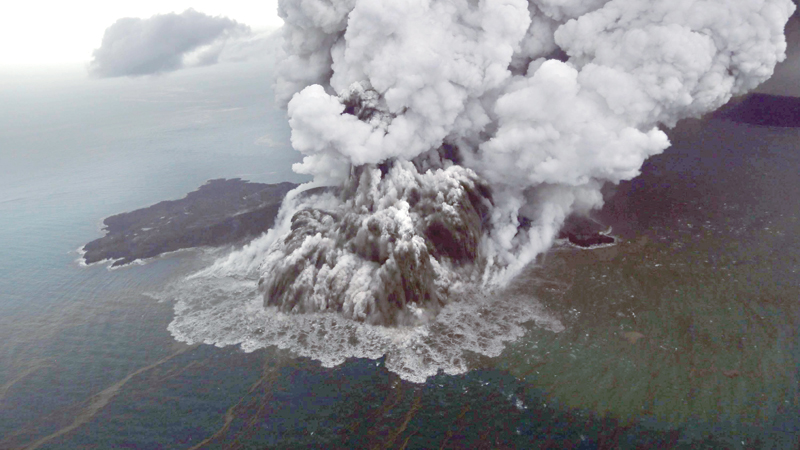

JAKARTA: Huge chunks of an Indonesian volcano litter the seabed after its eruption and subsequent collapse last year sparked a deadly tsunami, according to new research.
The marine survey imagery shows parts of the strait between Java and Sumatra islands covered with triangular-shaped boulders from the Anak Krakatau volcano, some as high as 90 metres.
The crater partly collapsed after its December 22 eruption with parts of it sliding into the ocean and triggering deadly waves that killed more than 400 people and injured thousands.
The Anak Krakatau volcano emerged at the site of the legendary Krakatoa volcano, which was destroyed after a massive 1883 eruption that killed at least 36,000 people.
The 2018 disaster struck without warning, washing over popular beaches and inundating tourist hotels and coastal communities, leaving a trail of death and destruction in its wake.
Debris from the volcano is spread as far as 2,000 metres from where it collapsed, according to new research presented at the American Geophysical Union’s meeting in San Francisco last week.
Using what’s known as multibeam echosounder bathymetry, an international team including members of the British Geological Survey, National Oceanography Centre and several US and British universities mapped the seabed with sonar technology.
“Tsunamis generated by very small volume landslides from active volcanoes such as Anak Krakatau have the potential to devastate local coastlines and their communities,” David Tappin from the British Geological Survey said.
In the team’s earlier study, which included work by Stephan Grilli at the University of Rhode Island, it said the disaster offered a rare look at tsunamis sparked by volcanic eruptions, rather than more common undersea earthquakes.
The 2018 tsunami was Indonesia’s third major natural disaster in six months. It followed a series of powerful earthquakes on the island of Lombok and a quake-sparked tsunami in September that killed around 2,200 people in Palu on Sulawesi island, with thousands more missing and presumed dead.
“The event really demonstrates the very real hazard from non-seismic tsunami mechanisms, and together with the Palu tsunami of September 2018, should be a catalyst for improved warning of and mitigation from these events,” Tappin said. — AFP
Oman Observer is now on the WhatsApp channel. Click here



